As someone who tries to maintain a healthy diet, I know how important it is to incorporate nutrient-rich foods into my meals.
One such food that I often turn to is quinoa. However, there are times when I run out of quinoa or want to switch things up with a different grain or vegetable. That’s where quinoa substitutes come in.

Understanding Quinoa Quinoa is a versatile, gluten-free grain that is packed with protein, fiber, and various vitamins and minerals.
It has a nutty flavor and a slightly crunchy texture that make it a popular choice for salads, bowls, and side dishes. However, quinoa can be expensive and may not be readily available in some areas.
Reasons for Substituting Quinoa There are several reasons why someone might want to substitute quinoa in their meals. It could be due to cost, availability, personal taste preferences, or dietary restrictions. Whatever the reason, there are plenty of quinoa substitutes that can be used in a variety of dishes.
Key Takeaways
- Quinoa is a nutrient-rich grain that is versatile and gluten-free.
- Quinoa substitutes can be used in dishes for various reasons, such as cost, availability, or personal taste preferences.
- There are several grain-based and vegetable-based quinoa substitutes to choose from.
Understanding Quinoa
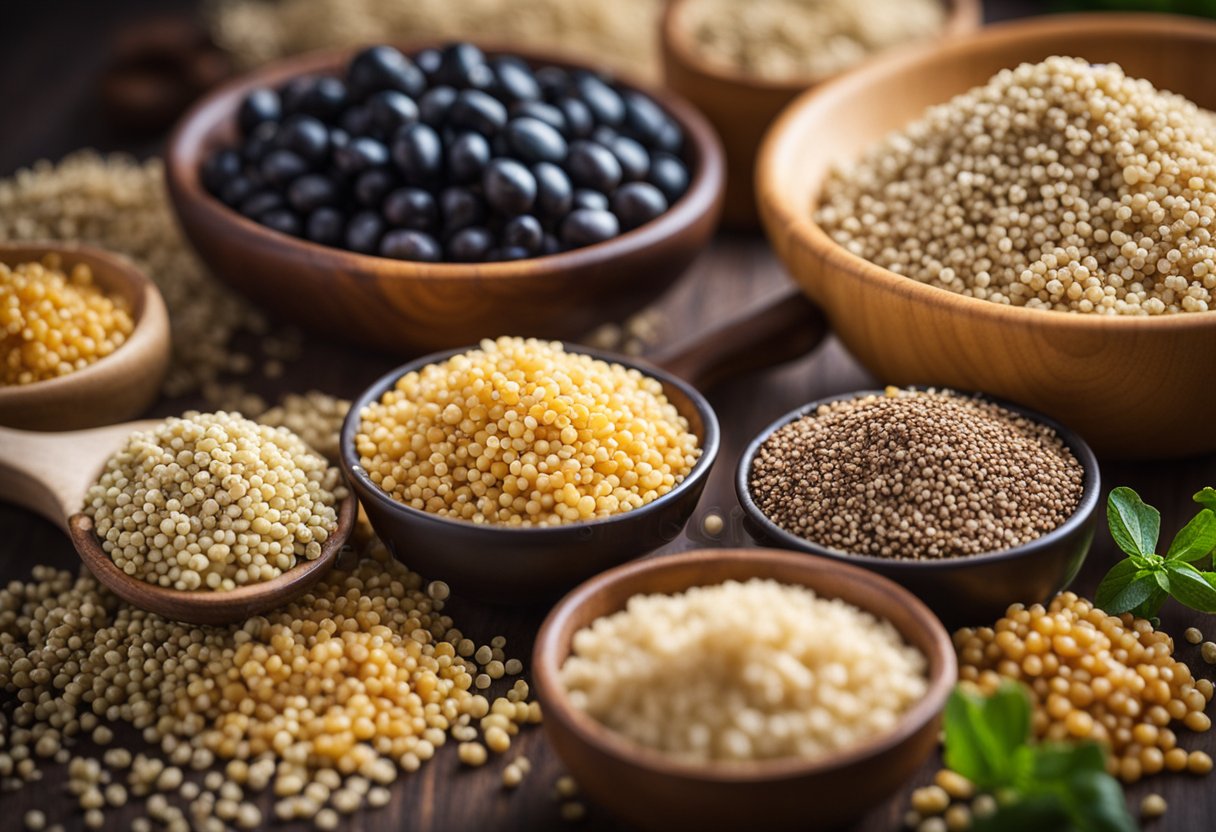
Quinoa is a versatile and nutritious ancient grain that has become increasingly popular in recent years. It is a complete protein, meaning it contains all of the essential amino acids our bodies need to function properly.
This makes it an excellent choice for vegetarians and vegans who may struggle to get enough protein in their diets.
In addition to protein, quinoa is also high in fiber, which can help regulate digestion and keep you feeling full for longer periods of time. It also contains a variety of important nutrients, including magnesium, iron, and potassium, as well as vitamins like vitamin C.
One of the unique things about quinoa is that it is a whole grain, which means it contains all parts of the grain, including the germ, endosperm, and bran.
This makes it a great source of fiber and other nutrients that are often lost when grains are processed into refined flour.
Overall, quinoa is a superfood that can provide a wide range of health benefits. Whether you’re looking to increase your protein intake, add more fiber to your diet, or simply enjoy a delicious and nutritious grain, quinoa is an excellent choice.
Reasons for Substituting Quinoa
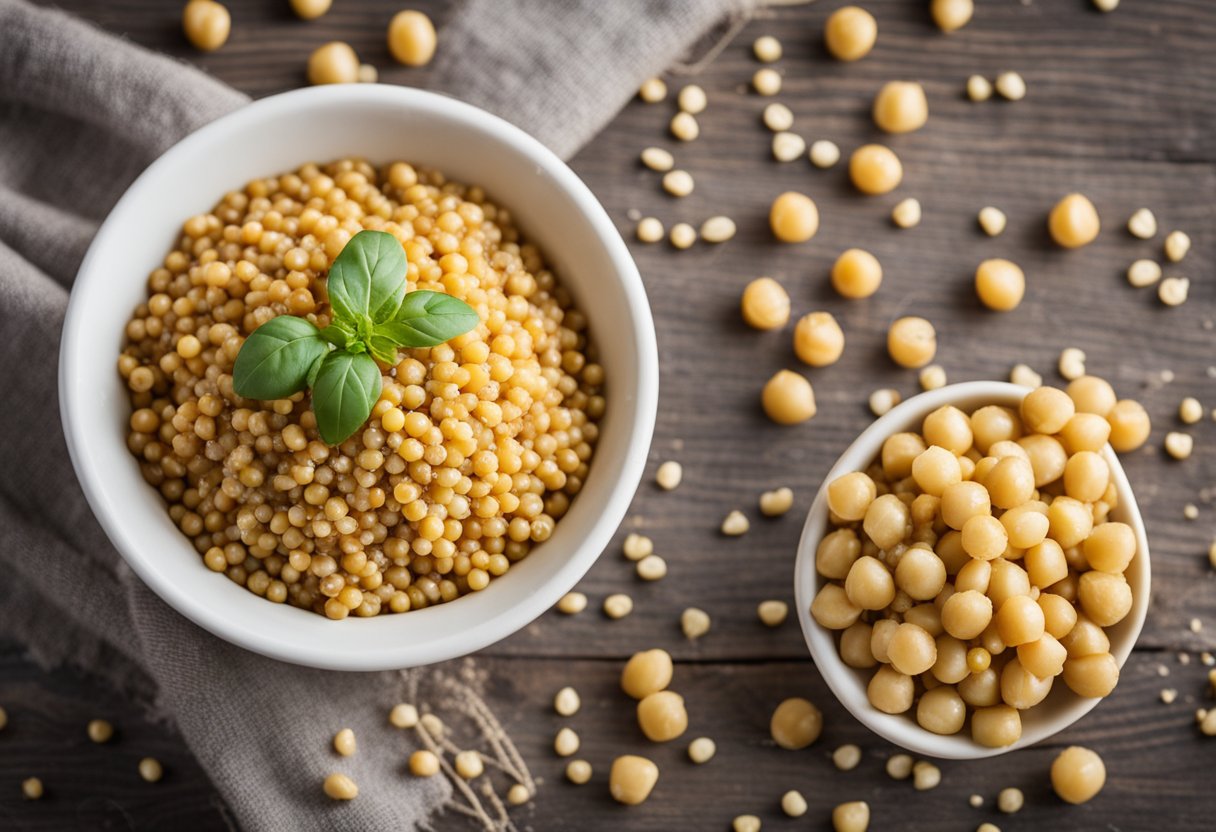
As much as I love quinoa, sometimes it’s not always the best option. There are various reasons why someone might want to substitute quinoa in their dish. Here are a few of them:
Cost
One of the main reasons for substituting quinoa is cost. Quinoa can be quite expensive compared to other grains. For those on a budget, substituting quinoa with a cheaper grain like rice or couscous can be a great option.
Taste
While some people love the nutty, earthy flavor of quinoa, others find it too strong or overpowering. If you’re not a fan of quinoa’s taste, you can try substituting it with a milder grain like millet or amaranth.
Allergies
Quinoa is a great gluten-free option, but it’s not suitable for everyone. Some people may have an allergy or intolerance to quinoa, which means they need to find an alternative. Buckwheat or rice are great gluten-free substitutes for quinoa.
Sweet or Savory
Quinoa has a unique flavor that can work well in both sweet and savory dishes. However, if you’re looking for a specific taste profile, you might want to substitute quinoa with a grain that complements your dish better.
For example, if you’re making a sweet dish, you could try substituting quinoa with a grain like barley or bulgur. If you’re making a savory dish, farro or wild rice could be a great option.
Overall, there are various reasons why someone might want to substitute quinoa in their dish. Whether it’s cost, taste, allergies, or flavor profile, there are plenty of alternatives to choose from.
Grain-Based Quinoa Substitutes
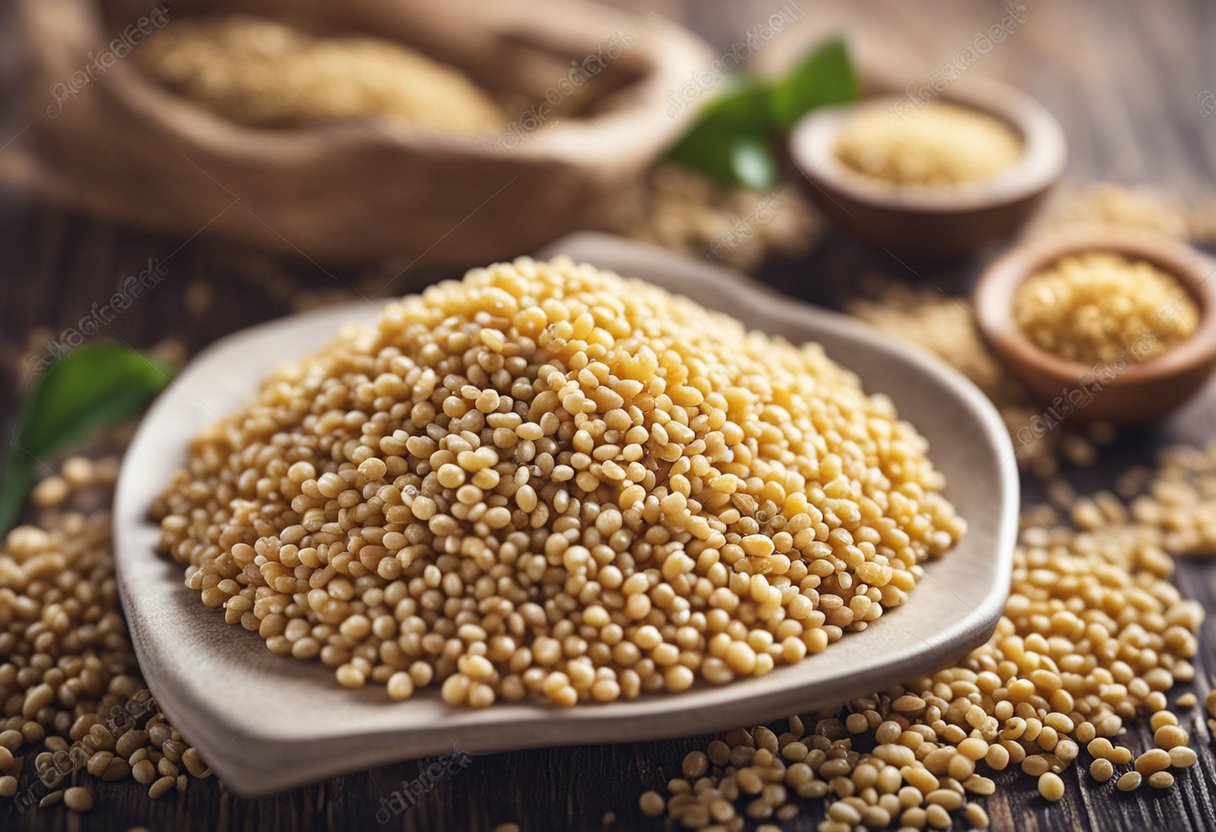
When looking for a quinoa substitute, grains are a great place to start. Here are some of the best grain-based quinoa substitutes:
Rice Varieties
Both brown and white rice are excellent quinoa substitutes. They have a mild flavor that can fill in for quinoa in most dishes.
White rice cooks quickly like quinoa, while brown rice can take longer to cook, up to 50 minutes for some varieties. Wild rice is another option that can replace quinoa in different dishes that don’t require its subtle nutty taste.
Other Grains
Barley is another excellent quinoa substitute. It has a slightly chewy texture and can be used in soups, stews, and salads.
Millet has a mild, nutty flavor and can be used in place of quinoa in salads and side dishes. Oats can also be used as a quinoa substitute in dishes like porridge or oatmeal bowls.
Teff is an excellent gluten-free grain that can replace quinoa. It’s rich in vitamin C and is mostly used in Ethiopian cooking, like smooth and spongy injera bread along with cumin and Greek traditional dishes.
Amaranth, sorghum, kamut, and buckwheat groats are other gluten-free grains that can be used as quinoa substitutes.
Pasta and Couscous
Couscous is a great low-carb substitute for quinoa. It’s made from semolina flour or durum wheat and has a mild flavor that can be used in salads, side dishes, and main courses.
Cooked couscous can also be used as a base for tabbouleh. Pasta, especially whole wheat pasta, can also be used as a quinoa substitute in salads and side dishes.
In summary, grains like rice, barley, millet, and teff are excellent quinoa substitutes. Gluten-free grains like amaranth, sorghum, kamut, and buckwheat groats are also great options. Couscous and pasta are low-carb alternatives that can be used in salads and side dishes.
Vegetable-Based Quinoa Substitutes

When looking for a quinoa substitute, vegetables are a great option. They are low in calories and low-carb, making them perfect for a healthy diet.
Cauliflower and Broccoli
Cauliflower and broccoli can be used as a substitute for quinoa by making “riced” versions of them. Riced cauliflower and broccoli can be found in the frozen section of most grocery stores, or can be made at home by grating the vegetables or pulsing them in a food processor.
These vegetable-based substitutes can be used in any recipe that calls for quinoa, and they have a similar texture and flavor. They are also a great way to add more vegetables to your diet.
Legumes
Legumes, such as chickpeas, peas, and lentils, are another great option for a quinoa substitute. Canned chickpeas can be mashed or blended to create a texture similar to quinoa, and they are a good source of protein and fiber.
Peas and lentils can also be used as a substitute for quinoa. They have a similar texture and can be used in a variety of recipes, such as salads and soups.
In conclusion, vegetable-based substitutes like cauliflower and broccoli rice and legumes like chickpeas and lentils are healthy and delicious options for those looking to replace quinoa in their diet.
Nutritional Comparison of Quinoa Substitutes
As a nutritionally-dense grain, quinoa is a popular ingredient in many dishes. However, sometimes it can be challenging to find quinoa or it may not fit within a particular diet.
In these cases, it’s helpful to know which substitutes can provide similar nutritional benefits. Here is a nutritional comparison of some common quinoa substitutes:
Brown Rice
Brown rice is a popular substitute for quinoa due to its similar texture and mild flavor. While it’s not as high in protein as quinoa, brown rice still provides a decent amount of fiber and nutrients. A half-cup serving of cooked brown rice contains:
- Protein: 2.5 grams
- Fiber: 1.8 grams
- Carbs: 23 grams
- Calories: 108
- Nutrients: Thiamin, Niacin, Vitamin B6, Folate, Iron, Magnesium, Phosphorus, Potassium, Zinc
Couscous
Couscous is a type of pasta made from semolina flour. It’s a quick and easy substitute for quinoa, but it’s not as nutrient-dense. A half-cup serving of cooked couscous contains:
- Protein: 3 grams
- Fiber: 0.9 grams
- Carbs: 23 grams
- Calories: 100
- Nutrients: Thiamin, Niacin, Folate, Iron, Magnesium, Phosphorus, Potassium, Zinc
Barley
Barley is a versatile grain that can be used in soups, stews, and salads. It’s higher in fiber than quinoa, but lower in protein. A half-cup serving of cooked barley contains:
- Protein: 2.5 grams
- Fiber: 3 grams
- Carbs: 20 grams
- Calories: 97
- Nutrients: Thiamin, Niacin, Vitamin B6, Folate, Iron, Magnesium, Phosphorus, Potassium, Zinc
Chickpeas
Chickpeas, also known as garbanzo beans, are a great source of plant-based protein and fiber. They can be used as a substitute for quinoa in salads and bowls. A half-cup serving of cooked chickpeas contains:
- Protein: 7.3 grams
- Fiber: 6 grams
- Carbs: 20 grams
- Calories: 134
- Nutrients: Thiamin, Niacin, Vitamin B6, Folate, Iron, Magnesium, Phosphorus, Potassium, Zinc
Cauliflower Rice
Cauliflower rice is a low-carb alternative to quinoa that’s great for those following a keto or paleo diet. It’s lower in protein and fiber than quinoa, but it’s also lower in calories. A half-cup serving of cooked cauliflower rice contains:
- Protein: 1.5 grams
- Fiber: 1.5 grams
- Carbs: 4 grams
- Calories: 20
- Nutrients: Vitamin C, Vitamin K, Folate, Potassium
In conclusion, while quinoa is a highly nutritious grain, there are several substitutes that can provide similar benefits. Brown rice, couscous, barley, chickpeas, and cauliflower rice are all viable options depending on your dietary needs and preferences.
Incorporating Quinoa Substitutes into Meals
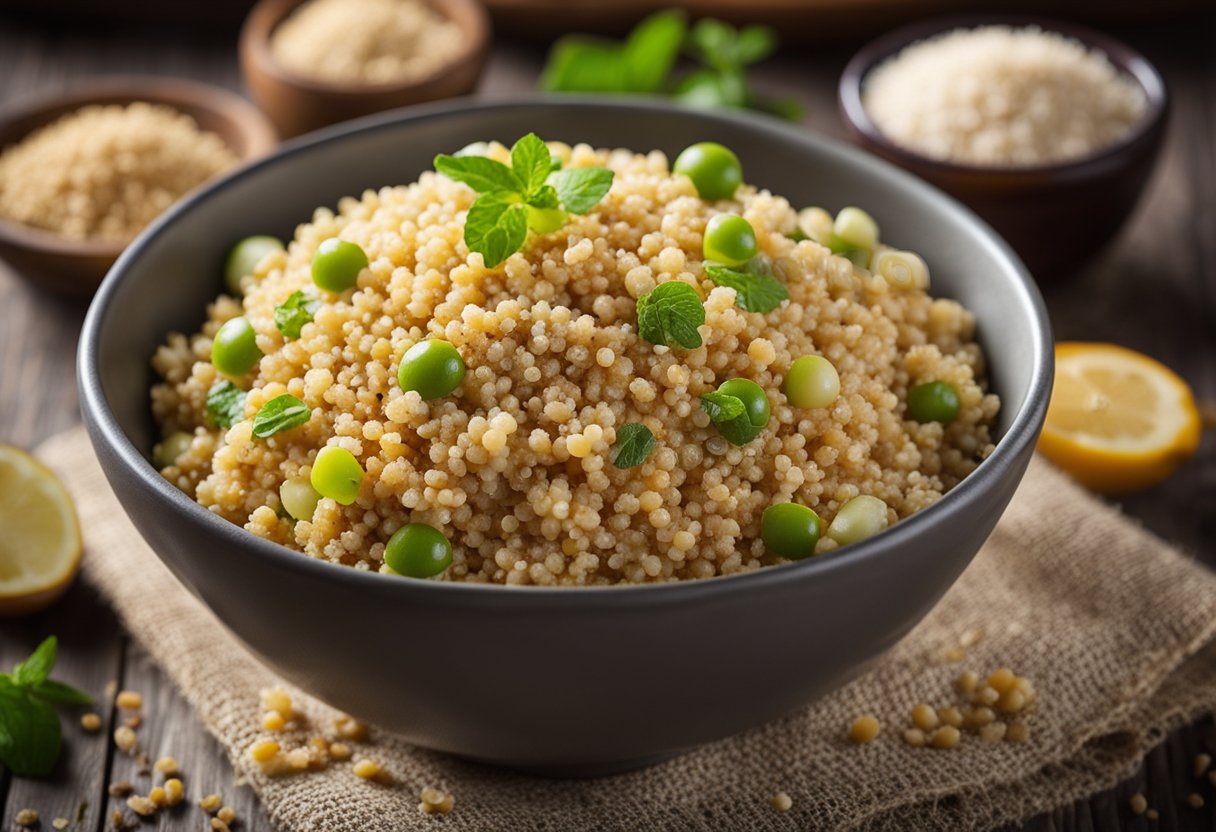
As versatile as quinoa is, there are times when you may want to try something new. Luckily, there are plenty of quinoa substitutes that can be used in a variety of dishes.
Here are some ideas for incorporating quinoa substitutes into your meals.
Salads and Soups
When it comes to salads and soups, there are plenty of grains and legumes that can be used in place of quinoa. Try using barley, couscous, or brown rice for a heartier texture.
You can also use chickpeas or lentils for a protein boost. For a nutty flavor, try using farro or bulgur wheat.
If you’re looking for something a little different, consider using roasted vegetables or dried fruits in your salads. Roasted sweet potatoes, beets, or butternut squash can add a sweet and savory flavor to your salad. Dried cranberries, apricots, or raisins can add a burst of sweetness.
Main Dishes
For main dishes, there are plenty of meat and vegetable options that can be used in place of quinoa. Roasted vegetables like cauliflower, broccoli, or Brussels sprouts can be used as a base for a vegetarian bowl. You can also use roasted sweet potatoes or butternut squash for a sweeter flavor.
If you’re looking for a meat substitute, try using ground turkey or chicken in place of quinoa. You can also use ground beef or pork for a heartier flavor. For a vegetarian option, try using tofu or tempeh.
Baking
When it comes to baking, there are plenty of flour substitutes that can be used in place of quinoa flour.
Almond flour, coconut flour, or oat flour can be used in place of quinoa flour for a gluten-free option. You can also use regular all-purpose flour for a more traditional option.
When baking with quinoa substitutes, be sure to adjust the recipe accordingly. Different flours may require different amounts of liquid or leavening agents. Be sure to follow the recipe closely to ensure the best results.
Overall, there are plenty of quinoa substitutes that can be used in a variety of dishes. Whether you’re looking for a heartier texture, a sweeter flavor, or a gluten-free option, there’s a substitute out there for you.
Experiment with different flavors, herbs, and spices to find the perfect substitute for your dish.
Choosing the Right Quinoa Substitute
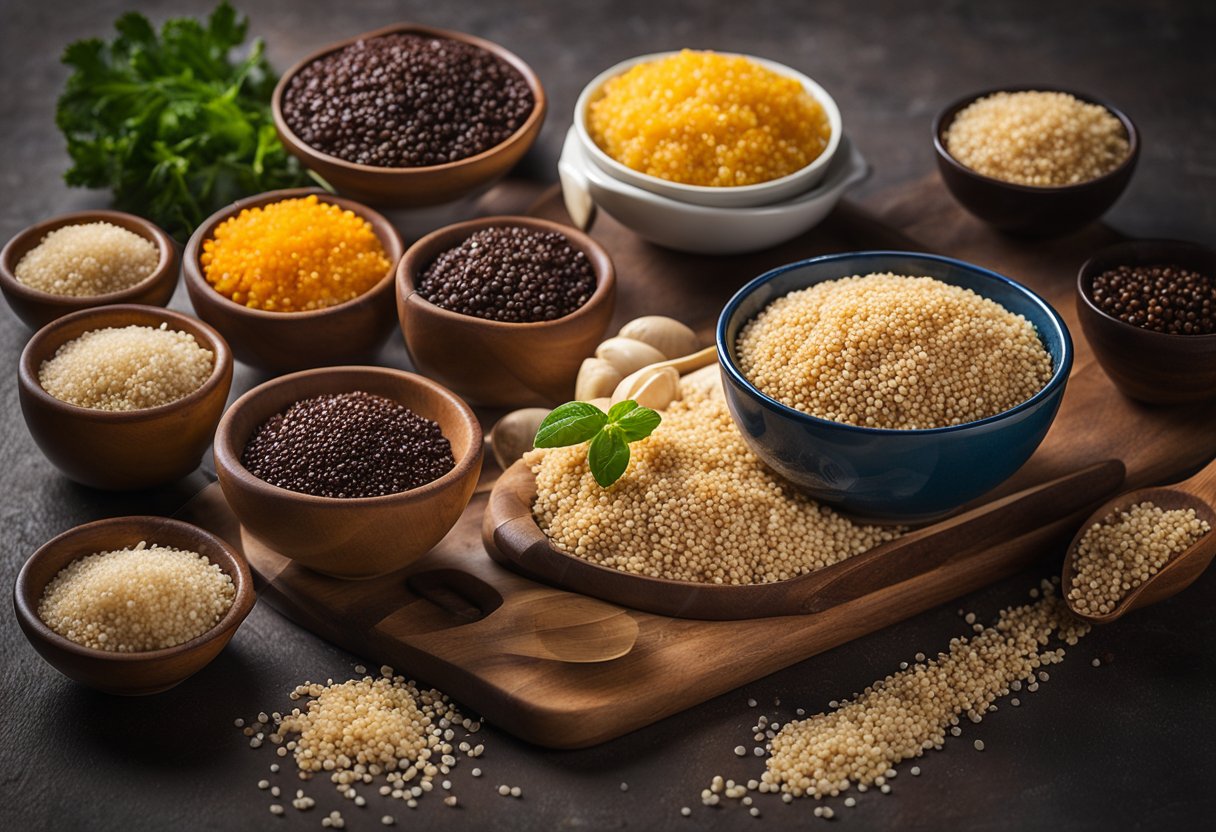
As much as I love quinoa, sometimes I need to switch things up and use a substitute. There are several reasons why someone might want to use a quinoa substitute, such as availability, cost, or personal preference.
Here are some tips for choosing the right quinoa substitute:
Consider Availability and Market Prices
Quinoa can be expensive and not always readily available. If you’re on a budget or don’t have access to quinoa, consider using a substitute.
Brown rice, for example, is a great substitute for quinoa and is often more affordable and easier to find. Wild rice is another great option that adds a unique flavor and texture to dishes.
Look for Similar Health Benefits
One of the reasons why quinoa is so popular is because it’s a complete protein and gluten-free. If you’re looking for a quinoa substitute that offers similar health benefits, consider using amaranth or buckwheat.
Both are gluten-free and contain all nine essential amino acids, making them complete proteins.
Personal Preference Matters
Ultimately, the best quinoa substitute is one that you enjoy and fits your personal preferences. If you don’t like the taste or texture of a certain substitute, don’t force yourself to use it.
Experiment with different substitutes until you find one that you like. Some people prefer couscous as a quinoa substitute, while others like using barley or farro.
In conclusion, there are many great quinoa substitutes out there that offer similar health benefits and unique flavors.
Consider availability, market prices, and personal preference when choosing a substitute. Don’t be afraid to experiment and try different substitutes until you find one that you love.
Frequently Asked Questions

What are some grains that can be used as a substitute for quinoa?
There are several grains that can be used as a substitute for quinoa, including farro, barley, brown rice, buckwheat, millet, amaranth, freekeh, couscous, bulgur, and wild rice. Each of these grains has a unique flavor and texture that can add variety to your meals.
What is the ratio for substituting quinoa for rice?
The ratio for substituting quinoa for rice is generally 1:2. This means that for every cup of quinoa, you will need two cups of water or broth.
However, it is important to note that the cooking time for quinoa is shorter than that of rice, so be sure to adjust your cooking time accordingly.
What are some quinoa-free recipes?
If you are looking for quinoa-free recipes, there are many options available. Some examples include lentil soup, vegetable stir-fry with brown rice, roasted sweet potato and black bean tacos, or a quinoa-free salad with mixed greens, roasted vegetables, and a protein of your choice.
Can quinoa be substituted for rice in a casserole?
Yes, quinoa can be substituted for rice in a casserole. However, it is important to note that quinoa has a shorter cooking time than rice, so you may need to adjust your cooking time accordingly.
Additionally, quinoa has a nuttier flavor and a slightly different texture than rice, so keep this in mind when making your casserole.
What are the differences between couscous and quinoa?
Couscous and quinoa are both grains, but they have some key differences. Couscous is made from semolina wheat, while quinoa is a seed.
Couscous has a mild flavor and a small, granular texture, while quinoa has a nutty flavor and a slightly chewy texture. Additionally, quinoa is a complete protein, while couscous is not.
What are some high-protein alternatives to quinoa?
If you are looking for high-protein alternatives to quinoa, there are several options available. Some examples include lentils, chickpeas, black beans, edamame, tofu, tempeh, seitan, and hemp seeds.
These foods are all rich in protein and can be used in a variety of dishes to add flavor and nutrition.







